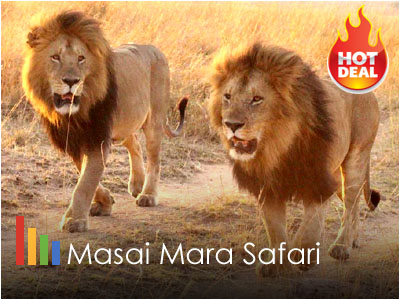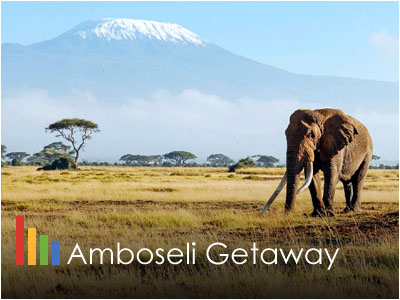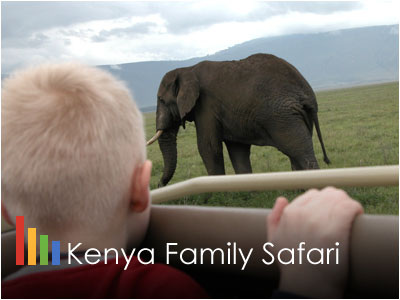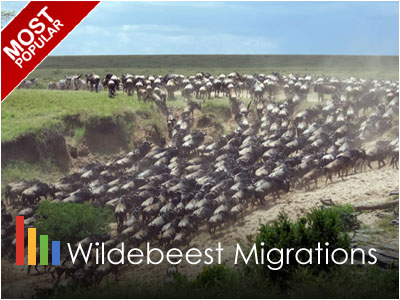Aberdare National Park, Kenya, Africa
Aberdare National Park - Kenya, Africa
Famed as the place where Queen Elizabeth II of England visited as a princess and left as queen in 1963, the Aberdare National Park is truly a beautiful place. Picturesque, steep forested ravines and open moorland characterise the Aberdare National Park. It also provides a habitat for elephants, black rhinos, leopards, spotted hyenas, olive baboons, black and white colobus monkeys, buffalos, warthogs and bushbucks among others. Rare sightings include those of the Giant Forest hog, bongo, golden cat, serval cat, African wild cat, African civet cat and the blue duiker. Visitors can indulge in picnics, trout fishing in the rivers and camping in the moorlands. Bird viewing is rewarding, with over 250 species of birds in the park, including the Jackson's Francolin, Sparrow hawks, goshawks, eagles, sunbirds and plovers. Its two tree hotels lies in the path of an ancient Elephant migratory route between the Aberdare Ranges and Mt Kenya National park, and is strategically sited right in front of a natural watering hole and salt lick, making it the perfect place to view game.
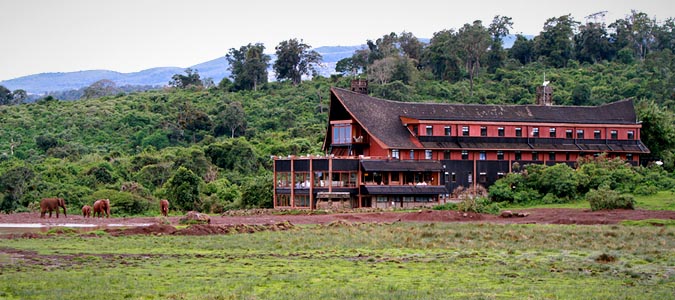
Basic Facts - Aberdare National Park
Aberdare National Park measures 766 sq kms and is Central Kenya, Nyeri County, East Africa in the Central highlands, west of Mount Kenya at an altitude of 1,829-3,994m. Aberdare National Park vegetation comprises of rich alpine and sub-alpine flora giving way at lower altitudes to bamboo forests and montane forests. Mammals of the forest zone include blue monkey, colobus, leopard, elephant, warthog black rhino, giant forest hog, bushbuck, buffalo, red duiker, and sum. The open moorlands have serval eland, several species of duiker, and the rare bongo. There is a rich Bird Life with more than 200 recorded species.
More About Aberdare National Park
The Aberdare National Park was created in 1950 to protect the forested slopes and moors of the Aberdare Mountains. The Aberdare National Parks lies in an isolated volcanic range that forms the eastern wall of the rift valley, running roughly 100km north south between Nairobi and Thomsons Falls. The National Park lies mainly above the tree line running along the 10,000ft contour with some forest and scrub at lower altitude in the 'salient' area near Nyeri with the boundary running down to the 7000ft contour. There are two main peaks, Ol Donyo Lesatima (3,999m) and Kinangop (3,906m) separated by a long saddle of alpine moorland at over 3,000m. The Aberdare are an important water catchment area providing water to the Tana and Athi rivers and part of Central Rift and Northern drainage basins.
The unusual vegetation, rugged terrain, streams and waterfalls combine to create an area of great scenic beauty in the National Park. The park is surrounded by a predominantly indigenous forest, whose management is under an MoU between KWS and the Forest Department. While the park has elephant, lion, rhino, black leopard and the beautiful but elusive bongo antelope, it is rarely visited by safari companies and individual travellers. There are a number of reasons for this, one is that the high rainfall turns the roads to mudslides and you need a 4x4 to get anywhere, and as a result the park often closes in the wet season. Added to this is the dense forest, which makes game viewing tricky. Lastly, other than campsites with minimal facilities, the only accommodation is at two very expensive tree lodges that are also the main attraction of the Aberdare. Both Treetops and The Ark are built above the ground beside floodlit waterholes with salt licks. Tourists and visitors must book in advance and cannot make their own way to the lodges in private vehicles. Aberdare Treetops lodge is one of Kenya's most famous tree hotels as this is where British Princess Elizabeth was informed that she was then the Queen in 1952 when her father died. The Ark, however, offers better game viewing, especially at night.
Game animals easily seen in the park during game viewing include; African Elephant, black rhino, leopard, spotted hyena, olive baboon, black and white colobus monkey, sykes monkey, cape buffalo, warthog, common zebra (North Aberdare), bushbuck, reedbuck. Rare sightings include those of Giant Forest hog, bongo, golden cat, serval cat, African wild cat, African civet cat, blue duiker. Very beautiful sceneries of Aberdare include magnificent waterfalls with the main ones being Karuru waterfalls which fall in three steps, 1st step 117M, 2nd step 26M and 3rd 130M, making a total of 273M, Chania waterfalls and may other smaller ones. Adding to the beauty of Aberdare are many ridges and river valleys which attract mountain scenery photographers.
A recent marked attraction in Aberdare is the 400Kms electric fence which was completed – final post on 28th August, 2009. The fence protects the whole Aberdare ecosystem from human pressures and contains wildlife, preventing human/wildlife conflict. Visitors can also indulge in picnics, trout fishing (in the past the rivers were stocked with brown rainbow trout) in the rivers and camping in the Moorlands. Bird viewing is rewarding with about 290 recorded bird species, including the Aberdare Cisticola that is critically endangered and the Jackson’s francolin, which is regionally endemic, sparry hawk, goshawks, eagles, sunbirds and plovers.. For more information regarding Aberdare National Park, DO NOT hesitate to Contact Us.
There is a road which traverses the Aberdare mountains and the National Park from Naivasha to Nyeri which can be handled by a sturdy vehicle in good weather. To get to Aberdare National Park from Nairobi, take the A104 north to Naivasha, and branch off on the road to Nyeri. There are six public gates into the park, and two private ones serving Treetops and the Ark. You cannot reach these lodges in your own vehicle. From Nyeri, the Salient can be approached via Ruhuruini Gate or Wandaris Gate, and Chaina Falls area via Kiandongoro Gate. The park can be approached from the Nyeri-Nyahururu road in the north via Shamata Gate or Rhino Gate, or from Naivasha or Gilgil in the west via Mutubio Gate. The steepest section of this route, formerly impassible in the rains, is now tarred. Nyeri is served by numerous buses from Nairobi, but no public transport runs to any of the gates. Hiking into the park is very difficult. To walk into the park you must be part of a group and pre-arrange the trip with the Park Warden, Aberdare National Park, P.O. Box 22, Nyeri. You will be assigned a guard. For more information regarding Samburu National Reserve, DO NOT hesitate to Contact Us.
Lodging immediately in or near the National Park include the Aberdare Country Club, 98 beds, The Ark with 118 beds, and Treetops, 94 beds. In nearbly Sweetwaters Game Reserve is the Sweetwaters Luxury Tented Camp. For lodging in nearby towns, or try the Outspan Hotel in Nyeri, 74 beds. Camping in the Aberdare National Park has been severely restricted since some campers were attacked by aggresive lions in the early 1980s. Rumours abound concerning these man-eaters, but it seems that the release of some semi-tame lions used in a film were the cause of the problem. It is uncertain whether the campers were attacked by these beasts, hungry and unafraid of humans, or by the other lions reacting against encroachments on their territory, but the attacks resulted in the closure of most campsites outside the Salient and limitations for walkers on the high moorlands. The Public Campsites at Chania Falls and at Queens Banda, which were closed through the early 1990s are reportedly reopened.
AfriChoice operates a wide range of carefully designed tours and safaris to Aberdare National Park by providing transport and booking a hotel for you. Our safari consultants will always be at your assistance should you need a tailor-made holiday to this unique destination. NB: For more information regarding Aberdare National Park, DO NOT hesitate to Contact Us.
Contact Us for more information:
Kenya Popular Wildlife Safaris
-
Masai Mara Escapade
3 Days / 2 Nights Safari
-
Amboseli Safari Getaway
3 Days / 2 Nights Safari
-
Kenya Highlights Safari
5 Days / 4 Nights Safari
-
Best of Kenya Safari
8 Days / 7 Nights
-
Kenya Family Wildlife Safari
10 Days / 9 Nights Kenya Safari
-
Wildebeest Migration Safari
10 Days / 9 Nights Migrations Safari
-
Kenya Wildlife Photo Safari
11 Days / 10 Nights Photo Safari
-
Kenya Safari & Beach Holiday
Kenya Safari & Beach Holiday



 Paul Kitching - UK
Paul Kitching - UK Karen Howard - CANADA
Karen Howard - CANADA


